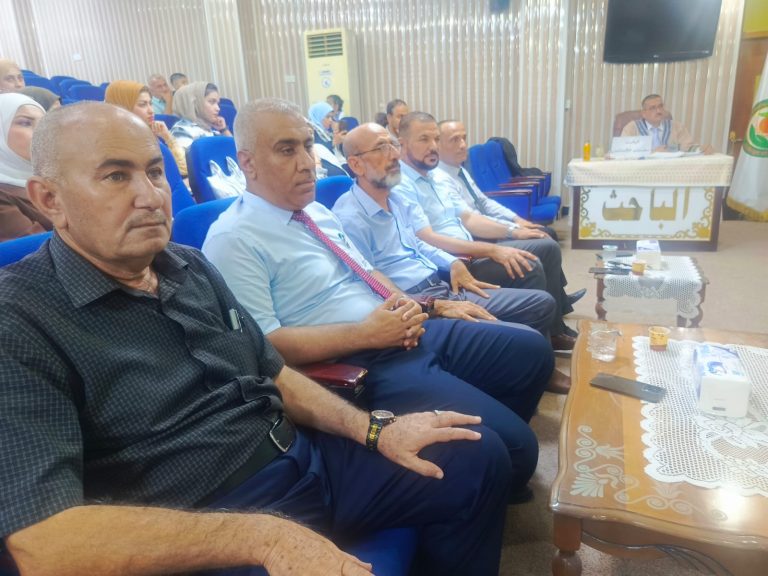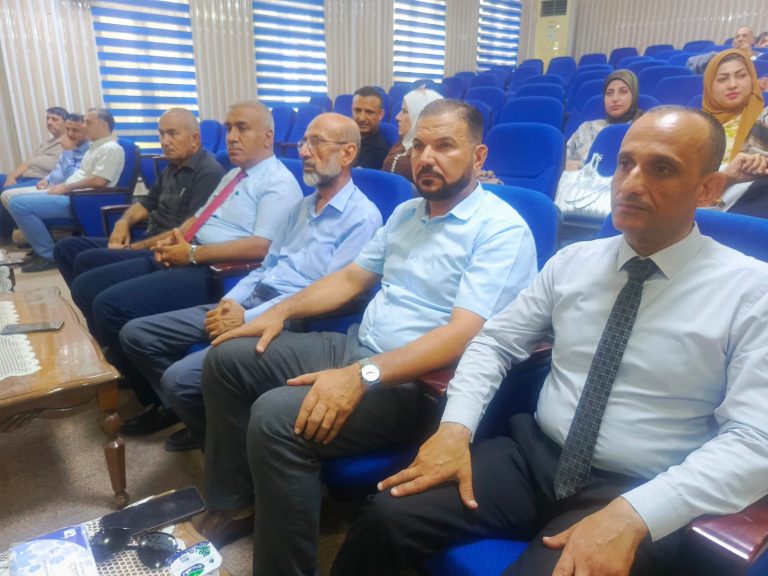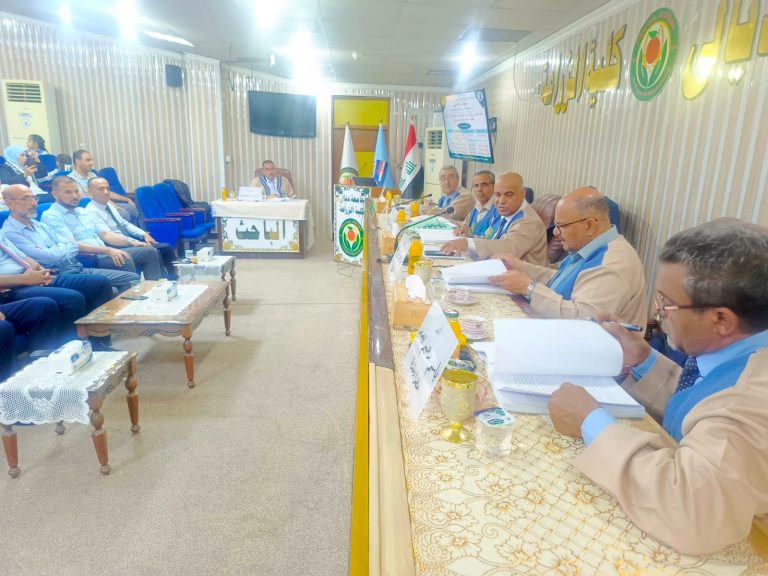A master’s thesis at the College of Agriculture focused on “Fertility Assessment of Soils in Citrus Orchards in Diyala Governorate – Baqubah District Using Geospatial Technologies.

The College of Agriculture at the University of Diyala discussed a master’s thesis entitled “Fertility Assessment of Soils in Citrus Orchards in Diyala Governorate – Baqubah District Using Geospatial Technologies.”
The study, presented by Saadoun Khaled Khalil, aimed to evaluate the fertility of soils within the study areas through laboratory analyses and comparative assessments. It also explored the relationship between spectral indices—such as NDVI and SAVI—and essential nutrients (NPK) in the study areas. Additionally, the research developed spatial distribution maps for selected physical and chemical soil properties using the Kriging method in ArcGIS Pro and produced a comprehensive fertility assessment map for the orchards.
The study reached several key conclusions:
-
Fertile soils were primarily classified as loam and sandy clay loam. These textures were prevalent in the second study area, which achieved a fertility score of F2. In contrast, sandy loam was dominant in the first study area, where the fertility rating was moderate, resulting in an overall F2 rating for the area.
-
The slope of the study areas was suitable for citrus orchards and contributed positively to the fertility rating.
-
The base saturation percentage (BS) was found to be very low across the study areas, which negatively impacted the overall fertility assessment, yielding the lowest score among the evaluated parameters.
The study made several recommendations:
-
Conduct broader fertility assessments across Diyala Governorate and for various crops to better understand the soil’s capacity to supply nutrients essential for plant growth and crop quality improvement.
-
Utilize remote sensing technology as a fundamental tool in agriculture, given its efficiency in saving time and effort. Remote sensing provides reliable predictions of nutrient availability in plants by analyzing vegetation reflectance, which offers insights into the plant’s nutritional status and potential disease infections promptly and at a lower cost.
-
Pay greater attention to citrus orchards, which have suffered from neglect for many years. Citrus orchards represent an essential part of the governorate’s identity and food supply. Ensuring the accuracy of soil fertility data will minimize the excessive use of fertilizers and help achieve optimal production outcomes.







